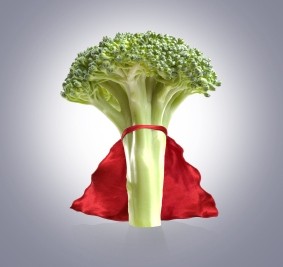Faced with the challenge of constantly doing more with less, the agribusiness has consistently championed the tools, practices and seed varieties that churn out higher crop yields, year over year. While this does provide more total cereal crops to an ever expanding global population, recent studies have pointed to the fact that this ‘sustainable intensification’ has sacrificed the overall nutritional content of these crops in order to produce higher yielding varieties, most notably in India. In fact, eating additional grains of poor nutrient content, likely further exacerbates the double-sided health challenges of obesity and malnutrition in LDCs.
Lisa Curtis, the Founder of Kuli Kuli, experienced this effect first hand while volunteering with the Peace Corps in Niger a few years ago. There, although calorically intaking enough food, she felt exhausted and malnourished after only a few months in the field. In her local village, traditional healers told her about moringa leaves that can be added as a meal supplement, and were known to fight diseases, respiratory illnesses, as well as ear and dental infections. Now, back in California, her company Kuli Kuli works with business cooperatives in West Africa to import and sell this leafy vegetable in powder and cold-pressed bar form in the U.S.
What does it take to start a ‘superfood’ trend?
These days it seems like everyone is posting their green smoothies and kale salads on Instagram. A previous article appeared in Bon Appétit magazine listing the ‘trendiest vegetables over the past fifty years’:
- Avocado (1969)
- Beets (1982)
- Sundried Tomatoes (1985)
- Arugula (1990)
- Asparagus (1993)
- Portobello Mushrooms (1995)
- Heirloom Tomatoes (2006)
- Brussel Sprouts (2010)
- Heirloom Carrots (2011)
- Kale (2012)
It was interesting to go through this list and match up my own eating habits with when each of these food items came into fashion (I feel like I definitely was very into my tween vegetarian phase right when Portobello mushrooms became an acceptable steak replacement). By far the most successful has been the avocado, originally introduced to the U.S. market by Italian communities in the 1920s, only then known as an alligator pear. Initially, Joel Denker notes in his book, The World on a Plate, that marketing the avocado was an enormous challenge both because it couldn’t be canned (which was extremely popular after WWII), and it’s texture was so markedly different from all other fruits. With a name change and an advertising campaign pitching the avocado as the main ingredient in upscale salads, along with lobster and grapefruit – the avocado quickly moved up the ranks to become a ‘luxury’ food item.
Balancing Demand
Occasionally, when a food becomes extremely popular, it can be hard to strike the right balance for demand. For example, in Ethiopia, teff is a staple food crop with nutritional benefits over other grains, but the sale of the raw product is currently banned to control demand. Teff-based products, known as injera (risen bread, pasta, biscuits), have garnered increasing popularity in the U.S. because of their gluten-free status, making them an ideal quinoa substitute, and since teff seeds are smaller they require less fuel to cook. Teff is a good example of a crop with denser nutritional value and lower yields (1.4 tons per hectare in Ethiopia instead of 3.2 tons per hectare being the global average for wheat). Increasing global demand for injera products from companies like Mama Fresh, and eventually teff in raw form when approved by the government, will contribute to rising local prices in Ethiopia, where many people rely on the product for its nutritional value.
We asked Lisa Curtis at Kuli Kuli if moringa faced any similar challenges as more and more people learned of its benefits. She explained that moringa grows like a weed in tropical regions and is extremely drought resistant. Although it would not compete with grains, it could potentially offer a more localized, sustainable alternative to micronutrient powders currently used to treat malnutrition as well as offer a new source of microcredit for cooperatives and small businesses. Recent studies published by the Johns Hopkins Bloomberg School of Public Health have found a correlation to increased moringa consumption and a reduction of glucose levels in diabetic patients when taken with a calorie-controlled diet and even noted that it can potentially help stop the spreading of cancerous human lung cells.
Currently, the term superfood has no legal or medicinal definition. A simple Google search defines superfoods as “nutrient powerhouses that pack large doses of antioxidants, polyphenols, vitamins, and minerals. Eating them may reduce the risk of chronic disease, and prolong life, and people who eat more of them are healthier and thinner than those who don’t.” In a recent article, Metrics for land-scarce agriculture, the authors suggest that rather than simply looking at yield gap analyses, and year over year yield increases when considering land use management, it would be more meaningful to develop a “nutritional yield” measuring the number of adults who would be able to obtain 100% of their recommended dietary reference intake (DRI) of different nutrients for one year from a food item produced annually on one hectare. Only then would it be possible to take a closer look at the desired crop mix and proper land use management to maintain the food system.
